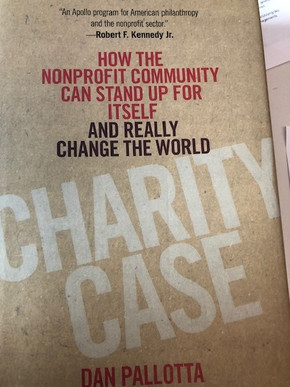Buchtipps
Management Solidarökonomischer Unternehmen - jetzt NEU von Florentine Maier und Ruth Simsa

Das Interesse an nachhaltiger, solidarischer Wirtschaft ist in den letzten Jahren rasant angestiegen. Immer mehr Sozialunternehmen und eine Renaissance der Genossenschaften sind Zeichen dieses Trends. Doch solidarisches Wirtschaften ist eine besondere Herausforderung: Einerseits müssen Sachgüter hergestellt oder Dienstleistungen erbracht werden, die am Markt bestehen können. Andererseits soll das innerhalb demokratischer Unternehmensstrukturen geschehen, und sollen die Produkte auch noch zu einem positiven gesellschaftlichen Wandel beitragen.
Florentine Maier und Ruth Simsa haben einen sehr praxisorientierten Ratgeber geschrieben, der eine Fülle von Werkzeugen und Tipps enthält, wie dieses Unterfangen gelingen kann. Sie beleuchten jene Bereiche, die in der herkömmlichen betriebswirtschaftlichen Literatur meist zu kurz kommen oder für alternatives Wirtschaften abgewandelt werden müssen. Philosophische oder politikwissenschaftliche Analysen, wie sie in weiten Teilen der Literatur über solidarische Ökonomie vorherrschen, findet man in diesem Buch kaum. Stattdessen geht es management-mäßig zur Sache. Die Autorinnen greifen dazu auf zahlreiche Praxisbeispiele und ein breites Spektrum betriebswirtschaftlicher und soziologischer Forschung zurück. Sie geben Handreichungen zu Herausforderungen, die jedes solidarische Unternehmen bewältigen muss: Marketing-Orientierung (im Sinne einer Orientierung an den NutzerInnen der Angebote, für die Werte geschaffen werden sollen), Rechtsformenwahl, Gestaltung demokratischer Organisationsstrukturen, Gestaltung demokratischer Meetings, Wahlmodi und Diskussionsregeln, Finanzierung (speziell Crowfunding), sowie zu Grundsatzfragen des Rechnungswesens und Finanzmanagements in einem „kapitalismuskritischen“ Unternehmen.
Auf 132 leicht zu lesenden Seiten wird dazu ein kompakter Überblick gegeben.
Charity Case - Tipp von Werner Kerschbaum

While Pallotta’s first book, “Uncharitable”, described the restraints facing charities, he summarizes points from his first book in the preface and in the first chapter and offers solutions—albeit rather audacious ones—for how nonprofits can overcome obstacles.
The introductory chapter, entitled, “And You Thought Public Perception of Congress Was Bad,” explores the various negative perceptions of charity held by the public. This chapter also discusses Pallotta’s establishment of the Charity Defense Council. Pallotta and his organization want people to embrace ideas like allowing nonprofits to spend larger portions of each donated dollar on administrative overhead, paying executives market-rate compensation, spending freely on advertising in support of the charitable mission, and so forth.
Chapters two through five outline how Pallotta’s new Charity Defense Council plans to change public perceptions of charity. In chapter two, Pallotta criticizes the media for almost always focusing on scandals and propagating other negative stories related to nonprofits rather than highlighting the achievements of charitable organizations. Pallotta thinks the sector needs to combat those who defame it basically by being more proactive with external communications and seeking to influence media with positive stories, and this is developed in the third chapter.
Chapter four explores legislative challenges facing charities and how these might be remedied by more spending on legal defenses. He also aptly addresses how and why nonprofits should seek to influence organizational public policy in addition to service-related public policy.
Chapter five purports that the legal structure of tax-exempt organizations somehow limits the capacity of such organizations to achieve social goals. It must be said though that there is no law (at least in the U.S.) that requires organizations with charitable missions to incorporate as tax-exempt organizations. In fact, social entrepreneurs can start for-profit firms, social purpose companies, or tax-exempt organizations with profit-making subsidiaries and unrelated business income streams—all of this can be dedicated to achieving social impact.
The sixth chapter tries to rally support for a large-scale effort to advocate for charity’s interests. This chapter is essentially an advertisement for the Charity Defense Council, which, in Pallotta’s mind, is the only way to organize around these ideas.
The final chapter presents Pallotta’s lofty goals of changing public perception of the charitable sector and increasing charitable giving from two to three percent of U.S. GDP—all within 10 years. Pallotta alludes to a change that is already afoot in the nonprofit sector that simply needs more willpower to materialize.
6 new books by Ashoka Fellows

Unter https://medium.com/change-maker/6-new-books-by-ashoka-fellows-5d4048f29cee finden Sie neue Bücher von Ashoka Fellows!
